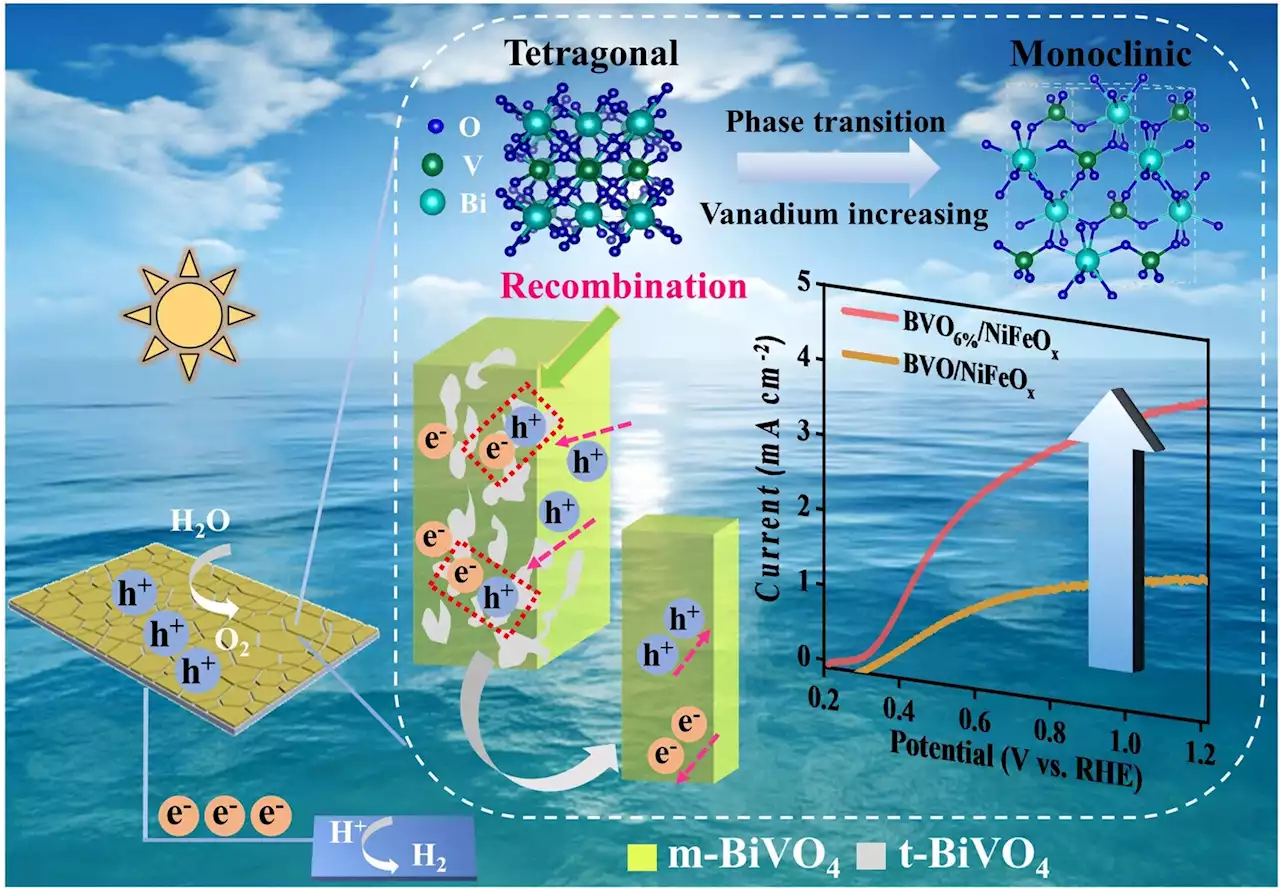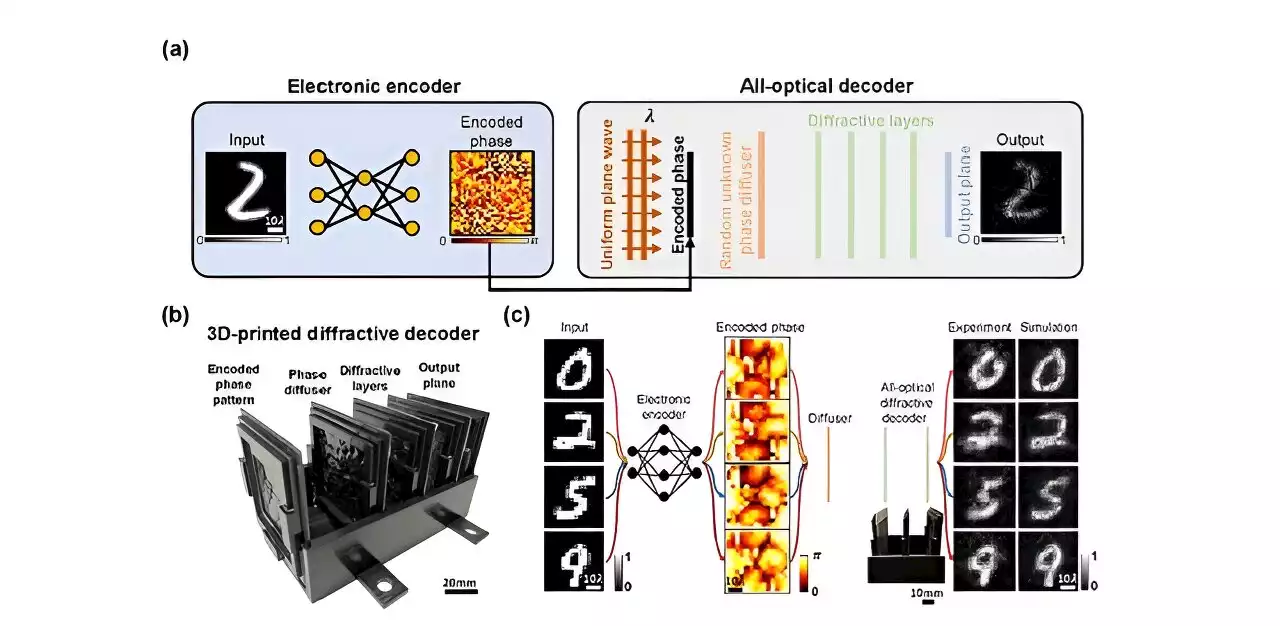Researchers have developed a new approach to building quantum repeaters, devices that can link quantum computers over long distances. The new system transmits low-loss signals over optical fiber using light in the telecom band, a longstanding goal in the march toward robust quantum communication networks.
Researchers have a new way to connect quantum devices over long distances, a necessary step toward allowing the technology to play a role in future communications systems.
Other leading quantum repeater designs emit light in the visible spectrum, which degrades quickly over optical fiber and must be converted before traveling long distances. The new device is based on a single rare earth ion implanted in a host crystal. And because this ion emits light at an ideal infrared wavelength, it requires no such signal conversion, which can lead to simpler and more robust networks.
Ideally, this photon would be encoded with information from the ion, Thompson said. Or more specifically, from a quantum property of the ion called spin. In a quantum repeater, collecting and interfering the signals from distant nodes would create entanglement between their spins, allowing end-to-end transmission of quantum states despite losses along the way.
To demonstrate that the new material is suitable for quantum networks, the researchers built an interferometer where photons randomly pass through one of two paths: a short path that is several feet long, or a long path that is 22 miles long . Photons emitted from the ion can go on the long path or the short path, and about half the time, consecutive photons take opposite paths, and arrive at the output at the same time.
Ireland Latest News, Ireland Headlines
Similar News:You can also read news stories similar to this one that we have collected from other news sources.
 Researchers produce polymers from ballbot-type carbenes for the first timeN-heterocyclic carbenes (NHCs) are small, reactive ring molecules that bond well with metallic surfaces, and which over the past few years have attracted a great deal of interest in the field of the stable chemical modification of metallic surfaces. One property—discovered at the University of Münster in Germany a few years ago—is the ability that certain NHC derivatives have, not only to anchor themselves to individual metal atoms, but also to completely extract an individual atom from the surface. Having bonded with these so-called adatoms, the NHCs glide freely over the surface—like a ballbot, i.e., a robot that moves on a sphere.
Researchers produce polymers from ballbot-type carbenes for the first timeN-heterocyclic carbenes (NHCs) are small, reactive ring molecules that bond well with metallic surfaces, and which over the past few years have attracted a great deal of interest in the field of the stable chemical modification of metallic surfaces. One property—discovered at the University of Münster in Germany a few years ago—is the ability that certain NHC derivatives have, not only to anchor themselves to individual metal atoms, but also to completely extract an individual atom from the surface. Having bonded with these so-called adatoms, the NHCs glide freely over the surface—like a ballbot, i.e., a robot that moves on a sphere.
Read more »
 Researchers reveal key restriction of bismuth vanadate photoanodes prepared via pyrolysis methodPhotoelectrochemical (PEC) water splitting is an ideal approach for converting solar energy into green hydrogen, and the controllable preparation and easy scalability of efficient photoanodes are crucial for practical application. Monoclinic phase bismuth vanadate (BiVO4) is a promising photoanode due to wide visible light utilization and good photoelectrochemical stability.
Researchers reveal key restriction of bismuth vanadate photoanodes prepared via pyrolysis methodPhotoelectrochemical (PEC) water splitting is an ideal approach for converting solar energy into green hydrogen, and the controllable preparation and easy scalability of efficient photoanodes are crucial for practical application. Monoclinic phase bismuth vanadate (BiVO4) is a promising photoanode due to wide visible light utilization and good photoelectrochemical stability.
Read more »
 Researchers help create 'guiding principles' to address homelessness at airportsIn recent years, there has been an increase in the number of people experiencing unsheltered homelessness in the United States. People who are in this situation have nowhere to go at night or during bad weather, except places not designed for humans to sleep: like a car, park, abandoned building, bus or train station, airport, or rest area. Because airports tend to have amenities like public bathrooms and sheltered rest areas, many airports are struggling to respond to the rise in homelessness.
Researchers help create 'guiding principles' to address homelessness at airportsIn recent years, there has been an increase in the number of people experiencing unsheltered homelessness in the United States. People who are in this situation have nowhere to go at night or during bad weather, except places not designed for humans to sleep: like a car, park, abandoned building, bus or train station, airport, or rest area. Because airports tend to have amenities like public bathrooms and sheltered rest areas, many airports are struggling to respond to the rise in homelessness.
Read more »
 Researchers take aim at weather forecasters' biggest blindspotAnyone who's been caught in an unexpected downpour knows that weather forecasting is an imperfect science. Now, researchers are taking aim at one of meteorologists' biggest blind spots: extremely short-term forecasts, or nowcasts, that predict what will happen in a given location over the next few minutes.
Researchers take aim at weather forecasters' biggest blindspotAnyone who's been caught in an unexpected downpour knows that weather forecasting is an imperfect science. Now, researchers are taking aim at one of meteorologists' biggest blind spots: extremely short-term forecasts, or nowcasts, that predict what will happen in a given location over the next few minutes.
Read more »
 Yale Researchers Discover Potential New Way To Treat CancerA recent study from Yale indicates that additional chromosomes in cancer cells are essential for the growth of tumors. Removing these extra chromosomes inhibits tumor formation. The findings, said the researchers, indicate that selectively targeting extra chromosomes may offer a new route for treati
Yale Researchers Discover Potential New Way To Treat CancerA recent study from Yale indicates that additional chromosomes in cancer cells are essential for the growth of tumors. Removing these extra chromosomes inhibits tumor formation. The findings, said the researchers, indicate that selectively targeting extra chromosomes may offer a new route for treati
Read more »
 Researchers demonstrate high-fidelity transmission of information via novel electronic-optical systemTransferring optical information in free space with large bandwidth and high transmission capacity has gained significant attention in various applications, such as remote sensing, underwater communication, and medical devices. Nevertheless, unpredictable, unknown phase perturbations or random diffusers within the optical path pose great challenges, limiting the high-fidelity transmission of optical data in free space. Adaptive optics presents a potential solution that can correct for random distortions dynamically; however, spatial light modulators and iterative feedback algorithms employed inevitably increase both cost and complexity.
Researchers demonstrate high-fidelity transmission of information via novel electronic-optical systemTransferring optical information in free space with large bandwidth and high transmission capacity has gained significant attention in various applications, such as remote sensing, underwater communication, and medical devices. Nevertheless, unpredictable, unknown phase perturbations or random diffusers within the optical path pose great challenges, limiting the high-fidelity transmission of optical data in free space. Adaptive optics presents a potential solution that can correct for random distortions dynamically; however, spatial light modulators and iterative feedback algorithms employed inevitably increase both cost and complexity.
Read more »
